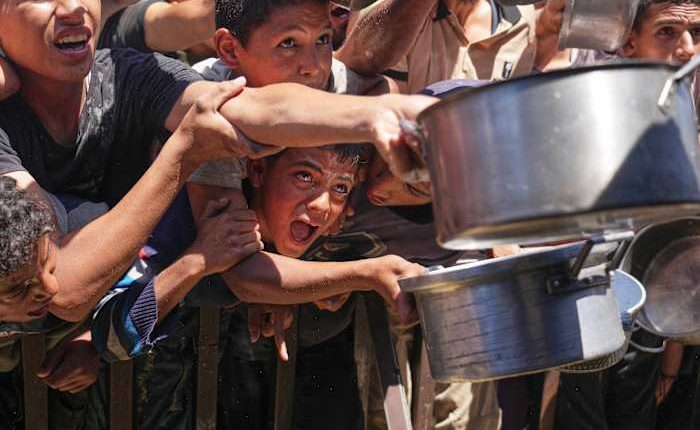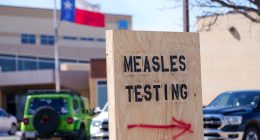Share this @internewscast.com

CAIRO – The Gaza Health Ministry reported Saturday that hospitals have received 79 bodies of individuals killed by Israeli airstrikes within the last 24 hours. This figure does not include those from hospitals located in the heavily damaged northern region, which officials have stated are now inaccessible.
The fatalities from Israel’s fresh military campaign over the past day also involved nine out of ten children belonging to a local doctor, as reported by devastated colleagues and confirmed by the Health Ministry.
According to Ahmad al-Farra, chief of the pediatric department at Nasser Hospital, pediatrician Alaa Najjar was working when she discovered her home ablaze. She had hurried from her duty back to her family’s residence after the attack.
Najjar’s husband was severely wounded and their only surviving child, an 11-year-old son, was in critical condition after Friday’s strike in the southern city of Khan Younis, Farra said.
The dead children ranged in age from seven months to 12 years old. Khalil Al-Dokran, a spokesperson for Gaza’s Health Ministry, told the AP that two of the children remained under the rubble.
There was no immediate comment by Israel’s military on the strike. Earlier Saturday, a statement said Israel’s air force struck over 100 targets throughout Gaza over the past day.
The Health Ministry said the new deaths brought the war’s toll to 53,901 since the Hamas-led attack on Oct. 7, 2023, that sparked the 19 months of fighting. The ministry said 3,747 people have been killed in Gaza since Israel resumed the war on March 18 in an effort to pressure Hamas to accept different ceasefire terms.
Israel’s pressure on Hamas has included a blockade of Gaza and its over 2 million people since early March. This week, the first small number of aid trucks entered the territory and began reaching Palestinians since the blockade began. But they were far fewer than the about 600 trucks a day that had been entering during the ceasefire.
Warnings of famine by food security experts, and images of desperate Palestinians jostling for bowls of food at the ever-shrinking number of charity kitchens, led Israel’s allies to press the government of Prime Minister Benjamin Netanyahu to allow some aid to return.
Netanyahu’s government has sought a new aid delivery and distribution system by a newly established U.S.-backed group, but the United Nations and partners have rejected it, saying it allows Israel to use food as a weapon and violates humanitarian principles.
Israel may now be changing its approach to let aid groups remain in charge of non-food assistance, according to a letter obtained by the AP. Israel accuses Hamas of siphoning off aid but the U.N. and aid groups deny there is significant diversion.
The Oct. 7 attack on southern Israel that sparked the war killed some 1,200 people, mostly civilians, and militants abducted 251 others. Israel’s retaliatory offensive, which has destroyed large swaths of Gaza, has killed mostly women and children, according to the Health Ministry, which doesn’t differentiate between civilians and combatants in its count.
Israel said it will continue to strike until Hamas releases all of the 58 remaining Israeli hostages and disarms. Fewer than half of the hostages still in Gaza are believed to be alive.
Hamas has said it will only return the remaining hostages in exchange for more Palestinian prisoners, a lasting ceasefire and an Israeli withdrawal from the territory. Netanyahu has rejected those terms and has vowed to maintain control over Gaza and facilitate what he refers to as the voluntary emigration of much of its Palestinian population.
___
Follow AP’s war coverage at https://apnews.com/hub/israel-hamas-war
Copyright 2025 The Associated Press. All rights reserved. This material may not be published, broadcast, rewritten or redistributed without permission.
















